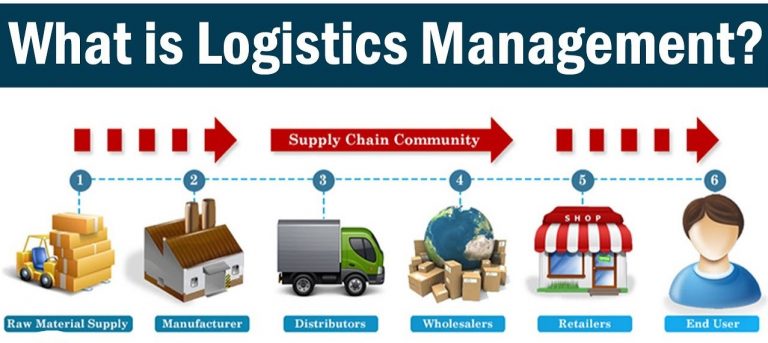Logistics and Supply Chain Management
The logistics and transportation aspects of moving perishable goods like vegetables and fruits across borders.
Introduction
In today’s globalized world, the transportation and movement of perishable goods, such as vegetables and fruits, across international borders, pose unique challenges in logistics and supply chain management. This article aims to explore the complexities associated with this process and identify key strategies to ensure the efficient and timely delivery of perishable goods while maintaining their freshness and quality.

Global Perishable Goods Marke
The global market for perishable goods, including vegetables and fruits, has been experiencing significant growth. This surge in demand can be attributed to various factors, including changing consumer preferences and dietary habits. As people worldwide become more health-conscious and seek fresh and nutritious options, the demand for fresh produce continues to rise. Furthermore, globalization has expanded the reach of these goods, creating opportunities for international trade.
Precision agriculture relies heavily on real-time data and the integration of technologies like Geographic Information Systems (GIS) and Remote Sensing (RS). These tools enable farmers to make data-driven decisions about planting, harvesting, and resource allocation, contributing to increased yields and sustainability.
Perishability and Transportation Challenges
Perishable goods, such as vegetables and fruits, are inherently vulnerable to spoilage due to their biological and physiological characteristics. These items have limited shelf lives and are highly sensitive to temperature, humidity, and handling. During transportation, several challenges arise:
- Temperature Control: Maintaining the right temperature throughout the supply chain is paramount. Temperature fluctuations can lead to spoilage and a decrease in product quality. Specialized refrigerated transportation and storage facilities are required to ensure consistent temperature control.
- Minimizing Handling Time: Excessive handling increases the risk of damage and accelerates the perishability of goods. Streamlining processes to minimize handling time is essential to maintain freshness.
- Preventing Damage: Fruits and vegetables are prone to bruising and physical damage during transit. Proper packaging and handling techniques are crucial to prevent such issues.
Cold Chain Management
The concept of the cold chain is fundamental in the transportation of perishable goods. A cold chain is a temperature-controlled supply chain that encompasses various stages, from harvesting and packaging to distribution and retail. It plays a pivotal role in preserving the freshness and quality of vegetables and fruits. Key aspects of cold chain management include:
- Temperature-Controlled Logistics: Specialized logistics providers use refrigerated trucks, containers, and warehouses to maintain the required temperature conditions throughout the journey.
- Refrigerated Warehouses: These facilities provide storage at controlled temperatures, allowing perishable goods to be stored before distribution, reducing spoilage, and extending shelf life.
- Specialized Vehicles: Refrigerated vehicles equipped with temperature monitoring systems ensure goods remain within the specified temperature range during transportation.
Regulatory and Compliance Measures
To ensure food safety and quality during the transportation of perishable goods, various countries impose regulatory requirements and compliance measures. These measures include:
- Import/Export Regulations: Countries often have specific rules for the import and export of perishable goods. Compliance with these regulations is critical to avoid delays and legal issues.
- Labeling Requirements: Proper labeling, including product information, expiration dates, and country of origin, is essential for transparency and compliance with international standards.
- Certifications: Obtaining certifications such as Good Manufacturing Practices (GMP) and Hazard Analysis and Critical Control Points (HACCP) demonstrates adherence to food safety standards and enhances trust in the supply chain.
Technology and Innovation
Emerging technologies are revolutionizing the logistics and supply chain management of perishable goods:
- Real-Time Tracking Systems: GPS and RFID-based tracking systems provide real-time visibility into the location and condition of goods, enabling proactive decision-making.
- IoT (Internet of Things) Devices: IoT devices, including sensors and data loggers, monitor temperature, humidity, and other critical parameters, ensuring compliance with cold chain requirements.
- Data Analytics: Advanced analytics tools process data from IoT devices to predict potential issues, optimize routes, and improve overall supply chain efficiency.
Risk Management and Contingency Planning
Transporting perishable goods involves inherent risks, including delays, spoilage, and supply chain disruptions. Effective risk management strategies are essential:
- Contingency Planning: Developing contingency plans for various scenarios, such as equipment failures or natural disasters, helps mitigate risks and minimize disruptions.
- Insurance Coverage: Adequate insurance coverage, including temperature-controlled cargo insurance, can provide financial protection against potential losses.
- Alternative Transportation Routes: Identifying alternative transportation routes and suppliers can serve as backup options in case of unforeseen disruptions.
Collaboration and Stakeholder Engagement
Collaboration among stakeholders is crucial for the successful transportation of perishable goods:
- Suppliers and Manufacturers: Close coordination with suppliers and manufacturers ensures a seamless supply chain, from production to distribution.
- Logistics Providers: Collaboration with logistics providers, including carriers and warehouses, helps optimize transportation processes.
- Regulatory Bodies: Engaging with regulatory bodies and staying informed about evolving regulations is essential for compliance and efficient operations.
Conclusion
In conclusion, logistics and supply chain management play a vital role in the international transportation of perishable goods like vegetables and fruits. Understanding the unique challenges and implementing appropriate strategies are crucial for optimizing efficiency, reducing costs, and maintaining the freshness and quality of these goods throughout the supply chain. Embracing technological advancements, complying with regulations, and fostering collaboration among stakeholders are key factors in addressing the complexities of this process and meeting the increasing demand for perishable goods in the global market.
Rad Golden Leaf General Trading LLC is a reputable company specializing in the export of fruits and vegetables, adhering to international trade principles. Additionally, the company is involved in the import of raw tobacco materials. Their strong commitment to quality and compliance with industry standards has established them as a trusted player in the global agricultural and tobacco supply chain. Their dedication to excellence ensures that customers receive top-notch products and services in both the export and import sectors.
